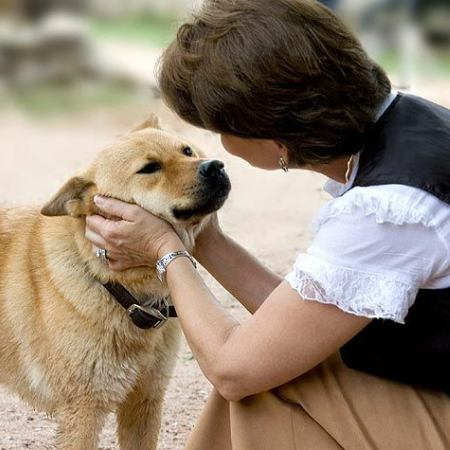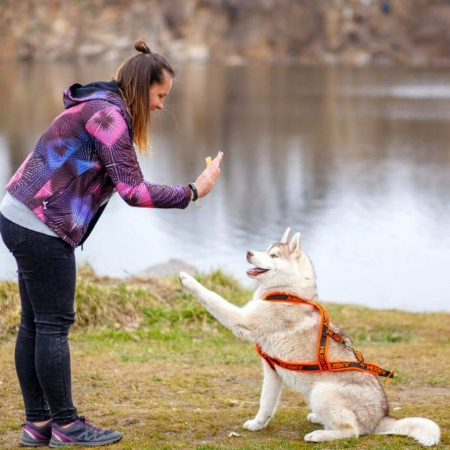The Myth of the Alpha Dog: Understanding Dominance Theory in Canine Behavior
Owners of dogs and dog trainers have been telling people for decades to “establish dominance” over their animals, making themselves the “alpha” in a hierarchy. Based on the “dominance theory,” this idea contends that dogs see their human families as a pack and need a strong leader to follow. However, this approach is founded on antiquated science, which can result in incorrect training techniques and misunderstandings regarding dog behavior.
The history of dominance theory, its applications to dog training, and the modern theory of canine behavior that dispels the antiquated notion of the alpha dog are all covered in this article.
The Origins of Dominance Theory
The 1940s studies of captive wolf packs by animal behaviorist Rudolph Schenkel are the source of dominance theory in dog training. After studying wolves kept in zoos, Schenkel concluded that these creatures arranged themselves into a rigid hierarchy, with an alpha couple ruling the rest by force and submission.

Given the same origin of dogs and wolves, this idea was soon applied to dog training. The theory was that domestic dogs, like wolves, need an alpha role model to keep the peace and avoid behavioral problems. Still, Schenkel’s research was faulty from the start. Instead of being wild, the wolves he saw were a collection of unrelated individuals kept in captivity together, an unusual situation that probably made them more tense and aggressive.
Compared to wild wolves, who usually live in family units with their parents and kids, this scenario is very different from how they naturally behave. The wild wolf social structure is less rigidly hierarchical and more like a family.
The Flaws in Dominance Theory
Because of several myths and antiquated ideas, the use of dominance theory in dog training is essentially incorrect. One big problem is that owners often mistake typical dog behavior. For example, they could think that a dog’s enthusiastic jumping is an attempt to establish dominance, but in reality, it’s usually just a pleasant greeting or a request for attention.
This misconception may give rise to improper training techniques that use force, intimidation, and punishment, including alpha rolls and leash jerks, which can make dogs fearful, anxious, or even aggressive, ultimately damaging the bond between the animal and its owner.
Furthermore, contemporary scientific research has disproven the core assumptions of dominance theory, revealing that wild wolves and free-ranging dogs do not operate within strict dominance hierarchies. Instead, their interactions are guided by cooperation, communication, and social learning.
A New Understanding of Canine Behavior
We now know far more about how dogs think, learn, and interact with people and other canines because of recent developments in the field of animal behavior science. Dogs are a different species with their specific social structures and behaviors, as evidenced by research, and are not just tamed wolves. Due to their extensive domestication over thousands of years, dogs have developed a keen sense of human emotions and cues. Rather than competing with one another for supremacy, dogs frequently ask their owners for advice and support.

Since they learn mostly by association and reinforcement, training based on positive reinforcement—which involves rewarding desired behaviors, is more efficacious and compassionate than approaches based on punishment. Additionally, rather than having a rigid hierarchy of dominance, dog social hierarchies are flexible and context-dependent, with different canines assuming the lead in different circumstances.
Understanding these indications is more important in dog interactions than trying to impose control. Dogs communicate primarily through body language, vocalizations, and signals. Owners can address underlying issues and create a better, more positive relationship with their dogs by identifying and responding to signals of stress, fear, or hostility.
Moving Beyond the Alpha Dog Myth
In order to transcend the antiquated notion of the alpha dog, dog owners and trainers ought to concentrate on cultivating mutual respect, trust, and communication with their pets. First and foremost, it’s critical to educate oneself on contemporary, science-based training techniques and canine behavior. Books, online courses, and professional trainers with expertise in positive reinforcement strategies are just a few of the reliable options available.
Next, learn more about your dog’s communication style by observing their body language and behavior in a variety of settings. This will help you both become closer to your dog. Positive reinforcement helps create a relationship built on trust and collaboration by encouraging your dog to repeat positive behaviors through play, treats, or praise.
Steer clear of punishment-based techniques, as these can undermine trust between you and harm your dog’s wellbeing. If you’re having trouble managing your dog’s behavior, get assistance from a qualified behaviorist or trainer who uses positive reinforcement methods to provide specialized direction and assistance.
The Benefits of Positive Training
Dog owners and their pets can benefit greatly from positive, science-based dog training methods. Since dogs feel safe and secure, they are more receptive to cues and eager to please, which contributes to the development of a stronger and more trusting attachment.

Dogs that use this strategy are also more likely to exhibit desired behaviors and are less likely to behave aggressively or out of fear. Dogs are more motivated to learn new skills in an interesting and rewarding setting, which promotes harmony in the home. This makes positive training successful as well as pleasurable.
Ultimately, putting more emphasis on understanding and communication than control enables owners to get a better knowledge of the needs and feelings of their dogs, which in turn fosters empathy and compassion and improves the quality of the relationship.
Conclusion
Our perception of and approach to training our dog friends have long been shaped by the myth of the dominant dog and the dominance theory. Dogs are not driven by a desire to rule over their human families, as contemporary science has demonstrated.
Rather, they are gregarious, intellectual animals that need clear communication, respectful relationships, and good interactions to survive. We can develop a more compassionate and successful method of training dogs by accepting modern theories about canine behavior and implementing positive reinforcement training techniques.
This change improves our canines and creates a stronger link between people and their cherished pets, leading to a happier and healthier connection.
Doglime for more dog-related information.
Tags










